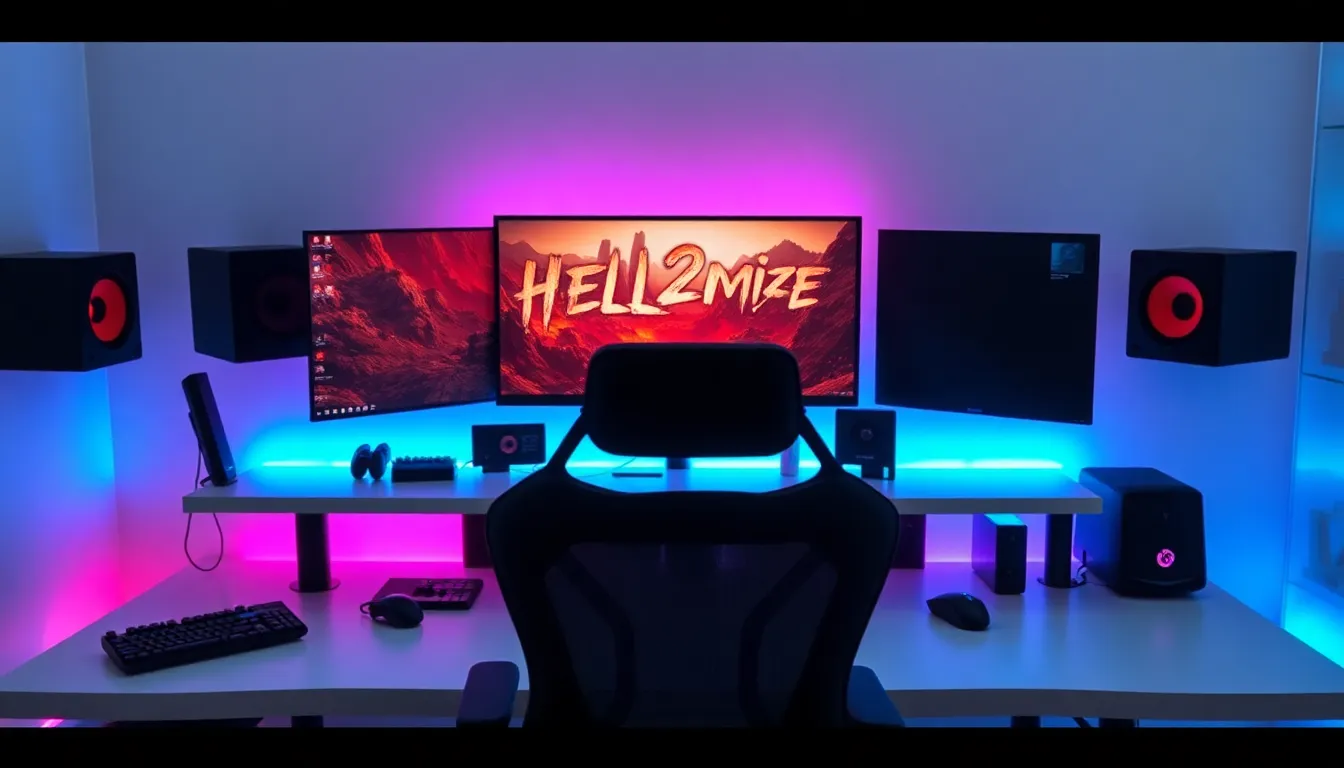In a world where your coffee maker might just know you better than your best friend, smart home segmentation is the unsung hero of modern living. Imagine a home that tailors itself to your every whim—from adjusting the thermostat when it senses you’re chilly to dimming the lights for that perfect movie night ambiance. It’s not just tech; it’s a lifestyle upgrade that makes life smoother and a bit more fun.
But wait, what exactly is smart home segmentation? Think of it as the VIP lounge for your devices, where they can mingle, strategize, and work together seamlessly. By understanding how different segments of your home communicate, you can unlock a whole new level of convenience and efficiency. So let’s dive into the world of smart home segmentation and discover how to transform a simple house into a well-orchestrated symphony of technology.
Table of Contents
ToggleOverview of Smart Home Segmentation
Smart home segmentation enhances convenience by grouping devices based on user behavior and preferences. This approach allows devices to communicate effectively, creating a cohesive environment. Homeowners can segment smart devices into categories such as lighting, security, and climate control systems.
Users benefit from personalized settings that optimize comfort. For instance, the thermostat can adjust automatically when individuals are present or away. Lighting systems may change color and intensity based on the time of day or activity. These adjustments promote energy efficiency and elevate user experience.
Market research indicates significant growth in smart home segmentation. In 2022, the global smart home market was valued at approximately $80 billion and is projected to reach over $135 billion by 2025. This rise reflects increasing consumer adoption of connected devices. Data suggests that 75% of households plan to invest in smart technologies within the next few years.
Further, segmentation supports enhanced security measures. Systems can group security devices like cameras and alarms to provide comprehensive monitoring. Homeowner peace of mind increases as technology responds to real-time alerts or suspicious activities.
Smart home segmentation also fosters interoperability among devices. Manufacturers design products to work with various ecosystems, ensuring seamless integration. This alignment allows users to expand their smart home networks, adapting to evolving needs.
Integration of smart home segmentation not only transforms homes into automated sanctuaries but also streamlines daily tasks. Dimming lights for movie night becomes effortless, while adjusting the heating or cooling minimizes energy costs without sacrificing comfort. Clear benefits exist for those embracing smart home technologies, transforming lifestyles and creating more efficient living spaces.
Key Segmentation Criteria
Smart home segmentation relies on various criteria that help categorize users and their preferences effectively. Understanding these criteria supports the optimal design of smart home environments.
Demographic Factors
Demographic factors include age, income, and lifestyle. Younger homeowners often prioritize tech-savvy features, while older users might prefer simplicity and ease of use. Income levels can influence the type and quantity of devices homeowners invest in. Additionally, family size plays a role; larger families might benefit from comprehensive security and multi-zone climate control systems. Segmenting users based on these factors enhances targeted marketing strategies and product offerings.
Behavioral Factors
Behavioral factors account for user habits and preferences. Some homeowners may favor energy efficiency, opting for smart thermostats and LED lighting. Frequent travelers might seek advanced security systems that provide remote monitoring capabilities. Others appreciate automation, such as scheduled lighting or automated window coverings, enhancing their daily routines. Understanding these behaviors enables a more tailored approach to product development and user engagement.
Technological Factors
Technological factors encompass device compatibility and user familiarity with smart technologies. Users’ comfort levels with technology significantly impact their engagement with smart devices. Compatibility among devices from various brands fosters a cohesive smart home experience. Users engaged with apps for device control often prefer solutions that integrate with existing technologies. Observing technological trends helps manufacturers adapt and create solutions that resonate with consumers, ensuring effective segmentation.
Market Trends in Smart Home Segmentation
Smart home segmentation is witnessing remarkable trends as technology advances and consumer habits evolve. These trends indicate significant changes in device usage and consumer behavior patterns.
Growth of Smart Home Devices
The smart home device market continues to expand rapidly. By 2025, projections estimate the global smart home market will exceed $135 billion. In 2021 alone, there were more than 800 million smart home devices sold worldwide. Consumers increasingly seek solutions that simplify daily tasks. Growth focuses on devices that enhance automation, energy efficiency, and security. Suppliers respond with innovations in smart lighting, climate control, and security systems. Such devices integrate with existing home systems, improving user convenience. A vast portion of homeowners is now adopting interconnected solutions for seamless living.
Consumer Adoption Patterns
Consumer adoption patterns reveal distinct preferences among various demographics. Research indicates that younger homeowners favor technologically advanced features, while older users prioritize simplicity and ease of use. In 2023, around 62% of millennials owned smart devices, significantly higher than the national average. Energy efficiency concerns drive many consumers towards smart home products. Security features also rank high on the priority list as homeowners seek peace of mind. Behavioral insights show that convenience plays a vital role in purchasing decisions. More than half of consumers consider smart home devices essential to their lifestyle. Overall, adoption levels reflect a broader shift towards integrating technology into everyday living.
Smart Home Segmentation Strategies
Smart home segmentation strategies focus on effectively organizing users and their preferences. These strategies enhance user experience and device interaction.
Targeting by Lifestyle Segments
Targeting lifestyle segments allows for efficient grouping of users based on unique characteristics. Younger homeowners often prioritize advanced technology features, while older homeowners frequently prefer simplicity and ease of use. Identifying these segments aids manufacturers in developing tailored marketing strategies. Behavioral patterns around energy efficiency, security, and automation also play a critical role. By understanding these habits, brands can target their products to best suit consumer needs.
Personalization of Smart Home Solutions
Personalization serves as a key element in smart home segmentation. Users value the ability to customize their home environments to match individual preferences. Adjusting settings for lighting, temperature, and security enhances comfort and efficiency. Innovative solutions utilize user data to adapt automatically over time, creating a seamless integration of technology in daily life. This level of personalization leads to increased satisfaction and strengthens the relationship between consumers and smart technologies. Implementing these strategies can result in a more engaging user experience, driving market growth and customer loyalty.
Conclusion
Smart home segmentation is reshaping how individuals interact with their living spaces. By personalizing environments and enhancing device communication, it elevates convenience and efficiency. This technology not only caters to diverse user preferences but also supports security and energy management.
As the market continues to evolve, understanding consumer behaviors and preferences becomes crucial for manufacturers. Tailored marketing strategies and personalized experiences are key to fostering deeper connections with users. The shift towards smart home integration signifies a transformative approach to modern living, making it an essential aspect of contemporary lifestyles. Embracing smart home segmentation is about more than just technology; it’s about creating a harmonious and efficient home environment.







